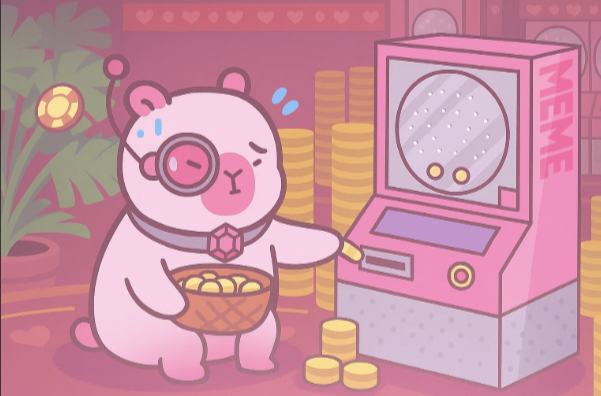In meme coin speculation, the most common narrative you hear is:
“Retail is chaotic.”
Random apes, random pumps, random screenshots, random panic sells…
Retail is often labeled as “irrational,” like only insiders, institutions, or cold-start teams deserve to talk about systems.
But in the early stages of designing PinkPunk’s speculation engine, we kept revisiting one core question while analyzing failed onchain behavior:
Is retail actually chaotic — or are we just failing to understand their rhythm?
After tracing the transaction paths of over 1,000 loss-heavy addresses, we identified three highly repeatable betting behaviors.
They may not look “professional” — but they are far from random.
Rhythm-Driven Bettors: Emotion Over Structure
This is one of the most common patterns we observed.
Typical behaviors include:
-
Being triggered by chat hype or trending visuals → apes in fast
-
No real project research — just “felt like trying”
-
As soon as price dips sharply → panic exits or ghosting
We call them rhythm-driven bettors.
They aren’t illogical. They’re just hyper-sensitive to rhythm and almost numb to data.
What they need isn’t strategy — it’s structured rhythm feedback.
PinkPunk’s Design Response: Rhythmic Support Structures
-
Unified multi-chain entry to reduce impulsive switching
-
No emotion-driven visual triggers — just rational info + clear pathways
-
Neutral UI design to avoid bot-induced FOMO amplification
Mimic-Based Bettors: Follow Without Friction
These users don’t model or analyze — but their social reflexes are lightning-fast:
-
“Who's buying?” “Which group’s talking?” → instant follow
-
No slippage tuning, no LP depth checks — pure herding behavior
-
Rarely take profits, often capitulate only after deep losses
We define them as mimic-driven bettors.
Their trades aren’t independent decisions — they’re expressions of social belonging.
Their behavior is more social participation than trading logic.
PinkPunk’s Design Response:
-
De-risked Social Triggers
-
All trending token entries are sourced from onchain behavior, not social hype
-
No “everyone’s buying” signals — avoids herd-induced wipeouts
-
Every betting UI is structurally clear, with slippage and risk alerts
Escape-Type Bettors: Won Once, But Can’t Repeat These users usually had an early win — but what followed was worse:
-
Caught a lucky meme early and took profits
-
Tried to replicate the same path — got rekt repeatedly
-
Caught in a loop of pseudo-technique + fading luck — eventually rage quit or gamble mindlessly
We call them escape-type bettors.
They believed in systems — until those systems couldn’t be reproduced. Then came structural collapse.
It’s not lack of capability — it’s broken trust in repeatability.
PinkPunk’s Design Response:
Accountable Systems + Transparent Feedback
-
Every step comes with slippage warnings, risk flags, and cross-chain alerts
-
If system fails → accountable fallback logic, to reduce trust breakdowns
-
Every trade can be retrospectively audited structurally — not just dismissed as “bad luck”
Final Note: Retail Isn’t Disorderly — Products Just Misread Their Concept of Order Retail trading behavior is not random:
-
They follow rhythm (even if it’s emotional)
-
They seek social affirmation (even if it’s herd-driven)
-
They crave repeatable paths (even if they often fail)
Most bots treat this as noise. PinkPunk sees this as design input.
That’s why we built a system that absorbs, not fights, these behavioral patterns.
Not everyone needs to be a strategy master — but every bettor deserves a system they can rely on.
👉 https://t.me/PinkPunkAutoTradingBot





评论 (0)